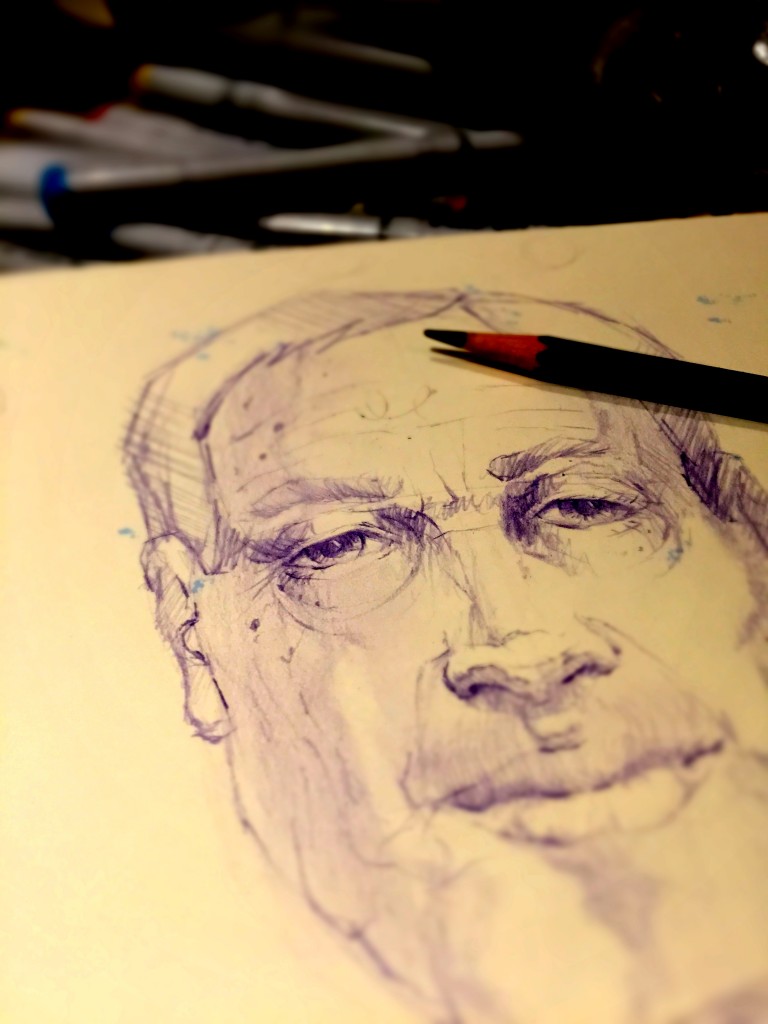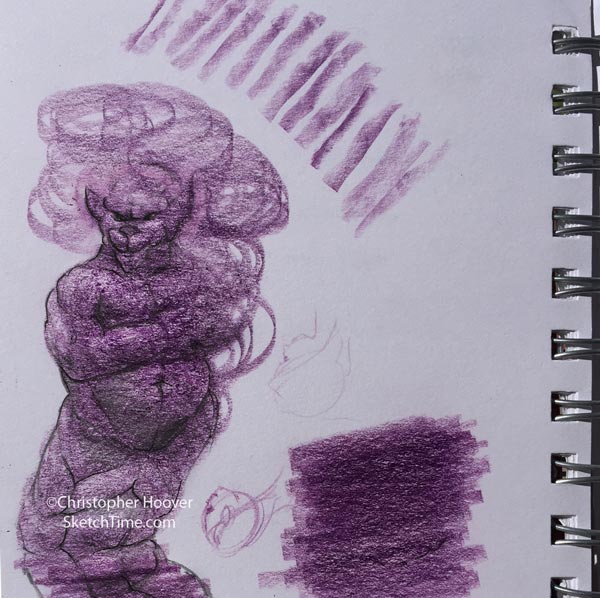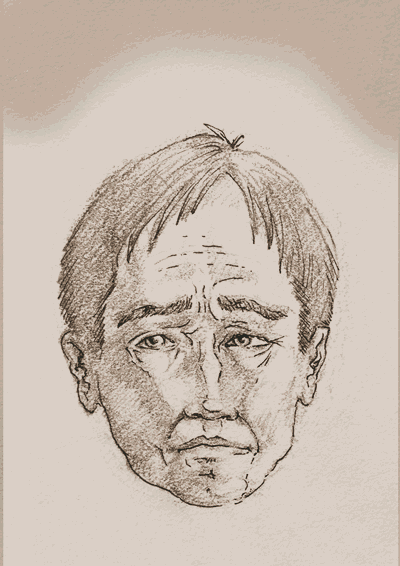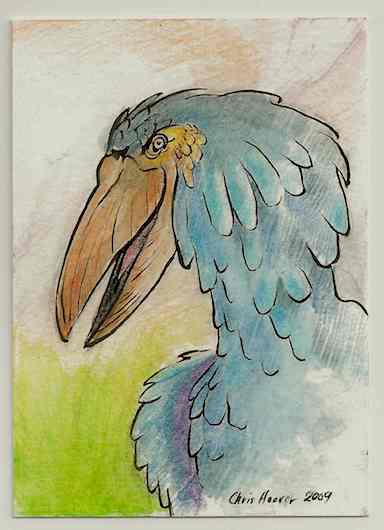It takes only a few marks to add decades to an invented character. Crows feet, heavier lids, skin irregularities can be convincing. The low angle cell phone pic adds some extra drama.

It takes only a few marks to add decades to an invented character. Crows feet, heavier lids, skin irregularities can be convincing. The low angle cell phone pic adds some extra drama.

I find it challenging to loosen up my style for character invention. Drawing small, random shapes with a light Copic brush pen often helps. In this case, I happened to be sharpening a Colo-Erase, and spotted a shape that resembled a sort of swirling feline genii. I added a little push in Photoshop to bring out some dimension.

Fun imagining the transition from Dr. J. to Mr H.
Can you watch the transition without staring into his eyes?


Only realized long after this ArtCard sketch that Pixar’s “For the Birds” short was its inspiration!
What-if scenarios are great exercises for character design. This concept for “evolved chickens” was part of an Art Order Challenge. Cluck, cluck.

Neville Page, an industrial designer best known as Hollywood’s “blockbuster creature designer” recently gave a presentation at the Oceanside Museum of Art. Posters and stunning 3d-printed models of his character designs from Super8, Avatar, Tron, Green Lantern, Prometheus, Cloverfield, & Star Trek were on display.
Recent Comments